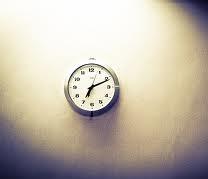Marijuana Withdrawal Timeline
In 2013, there were an estimated 19.8 million current (past month) users of marijuana and it has been proven to cause dependency in long term and regular use with withdrawals upon discontinuance.
Marijuana Use
Marijuana users commonly smoke the dried buds and leaves from the plant with some users smoking the extracted hash oil. Other formulations of cannabis extractions and mixtures may be ingested by vaporization or orally in foods, candies, or drinks. The prevailing psychoactive compound of THC produces the “high” that people look for when they use marijuana and the THC levels in modern plants continue rise as cultivators improve their growing techniques for this purpose.
Marijuana Dependency
Marijuana dependence develops overtime and in varying levels of degrees according to many contributing factors such as frequency and amount of use, age of beginning use, mental health status, biological factors, methods of use, and potency and strains of marijuana used which is almost always undetermined. With the new strains and increased THC potencies the number of individuals becoming dependent on marijuana is increasing.
Marijuana dependence can be subtle at times, because marijuana is stored in fat cells of the body and released gradually which may cause less noticeable withdrawal symptoms when used less than a few days a month. According to the National Institute on Drug Abuse “The intention to relieve withdrawal symptoms can drive relapse during quit attempts, giving cannabis withdrawal clinical significance as a target of treatment.”
Marijuana Withdrawal Timeline

Withdrawal symptoms from marijuana will dissipate on their own in time.
The level of dependency is closely related to the severity of withdrawal symptoms and other factors of influence can include co-occurring mental health disorders or poly-substance use, history of aggression or violence, and expectations of withdrawal symptoms. A typical marijuana withdrawal timeline among daily users involves:
From day 1, cravings for cannabis, decreased appetite, anxiety, irritability, aggression, physical tension, depression, and moodiness may begin. Insomnia and strange dreams are often reported within the first 24 – 72 hours along with physical symptoms (most predominant in heavy use) which may include shaking, tremors, stomach pains, headache, chills, sweating.
Solemn or negative moods, mood swings, depression and aggression usually peak on days 3 or 4, and the highest intensity of symptoms can last 7 – 10 days or longer. Some symptoms such as cravings, moodiness, irritability, depression, or aggression may last weeks or an undeterminable amount of time.
Then, there are post acute withdrawals which can appear weeks or months after last marijuana use, and last a few days, then go away only to reappear later. Gradually the time in between will get longer, but, these withdrawals can last years or more and make relapse a good possibility for some.